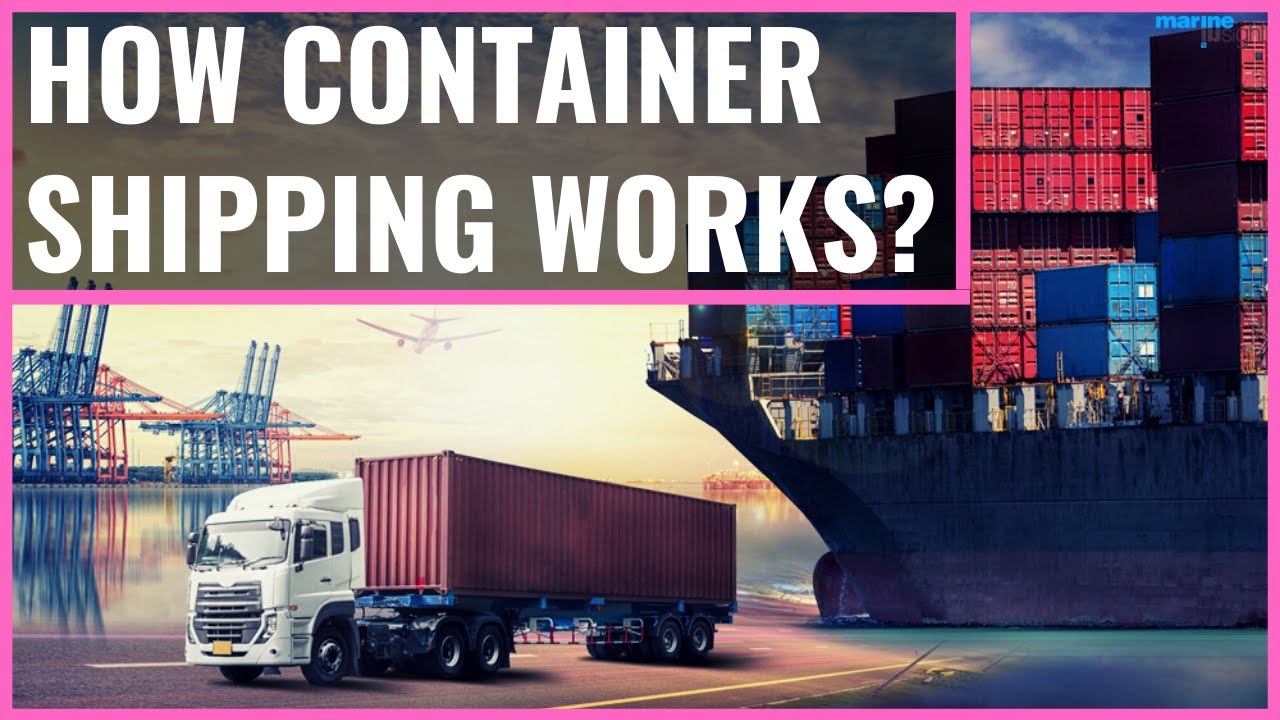MEMBUAT BAY PLAN KAPAL CONTAINER !!! POSISI BAY !!! ROW !!! TIER !!!
Summary
TLDRThis video script delves into the intricacies of container loading and placement on a ship, explaining key terminologies and processes. It covers the layout of the ship, the division of the ship into sections such as the bow, stern, and starboard, and how containers are organized in different holds. The script highlights the use of terms like 'row', 'bay', and 'tier' to precisely place containers in both 20-foot and 40-foot sizes, ensuring efficient use of space. The video emphasizes the importance of correct placement for safety, stability, and smooth cargo operations during transport.
Takeaways
- 😀 The ship is divided into various sections, including the bow (front), stern (back), and port (left) and starboard (right) sides, each with distinct navigational markers (red and green lights).
- 😀 Containers on ships are loaded using a systematic grid system, defined by terms such as 'bai' (bay), 'row,' and 'tear' (tier), to ensure proper placement and organization.
- 😀 Odd-numbered rows on the starboard side are designated for 20-feet containers, while even-numbered rows on the port side are designated for 40-feet containers.
- 😀 Container placement is done from the center of the ship outward, with containers aligned according to specific bay, row, and tier designations.
- 😀 In the cargo hold, containers are placed in bays identified by numbers (odd for 20-feet containers and even for 40-feet containers), and these bays are organized by a vertical system for efficient use of space.
- 😀 The loading process follows a detailed order, with containers stacked from bottom to top, ensuring each container fits precisely within its designated space.
- 😀 The system also includes 'Inhold' (the bottom section of the hold) and 'Ondeck' (the upper section), each with distinct container placement rules.
- 😀 For containers loaded onto the ship, the placement follows a grid system where bay numbers are adjusted depending on whether the containers are placed on deck or inside the hold.
- 😀 Containers are marked with colors (e.g., red, green, brown, blue) to indicate their placement in specific bays and rows, aiding in easy identification.
- 😀 The process emphasizes stability and balance, as the order of container placement directly impacts the ship’s handling and cargo stability during transit.
Q & A
What is the purpose of the 'bow' and 'stern' on the ship?
-The 'bow' is the front part of the ship, and the 'stern' is the rear part. These terms help define the ship's orientation and navigation direction.
How is the port side of the ship identified?
-The port side of the ship is the left side when facing forward. It is typically marked with a red light.
What does 'starboard' refer to on a ship?
-The 'starboard' side refers to the right side of the ship when facing forward, and it is usually indicated by a green light.
How are containers numbered in the ship's cargo holds?
-Containers are numbered using a longitudinal system, with odd numbers for 20-foot containers and even numbers for 40-foot containers.
What is the significance of 'bay' in container placement?
-A 'bay' is a section in the cargo hold that contains slots where containers are placed. The bays are numbered sequentially from the front to the back of the ship.
How are the rows of containers organized on the ship?
-Rows are numbered based on their position from the center of the ship outward. Odd-numbered rows are to the starboard side, while even-numbered rows are to the port side.
What does 'inhold' and 'ondeck' refer to in container placement?
-'Inhold' refers to containers placed inside the cargo hold, while 'ondeck' refers to containers placed on the deck of the ship.
What is the role of the twist lock in container placement?
-The twist lock is a device used to secure containers in place, especially when placed on the deck or in the hold, ensuring they do not move during transit.
How is container size classified on the ship?
-Container sizes are classified as either 20 feet or 40 feet. The placement of these containers follows a system where 20-foot containers are in odd-numbered bays, and 40-foot containers are placed in even-numbered bays.
How does the ship's stability factor into container placement?
-The stability of the ship is carefully considered when loading containers. Containers are placed from the center outward, ensuring the ship remains balanced during transit.
Outlines

This section is available to paid users only. Please upgrade to access this part.
Upgrade NowMindmap

This section is available to paid users only. Please upgrade to access this part.
Upgrade NowKeywords

This section is available to paid users only. Please upgrade to access this part.
Upgrade NowHighlights

This section is available to paid users only. Please upgrade to access this part.
Upgrade NowTranscripts

This section is available to paid users only. Please upgrade to access this part.
Upgrade NowBrowse More Related Video

How A Container Ship Secures Containers - Design, Safety, Container Locating

What Are These Cargo Ships Carrying? | Chief MAKOi Seaman Vlog

Lesson 028 - Accounting for Merchandising Operations 2: Transportation

Ship Terminology - - Ship Parts Names with Pictures #shipterms #shipparts

How Container Shipping Works?

Sistem Logistik Pelabuhan - Minggu 11b - Operasi peti kemas
5.0 / 5 (0 votes)